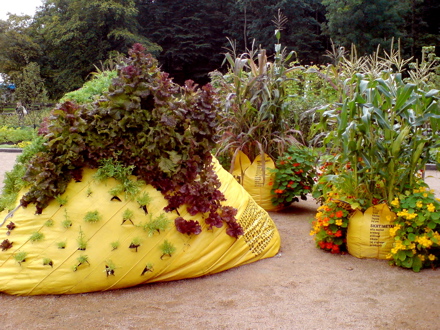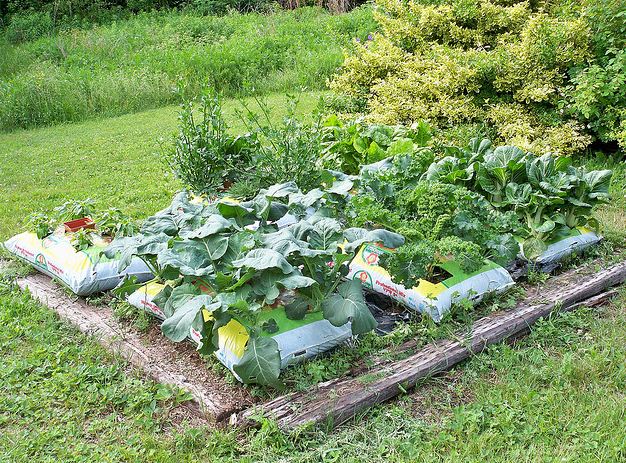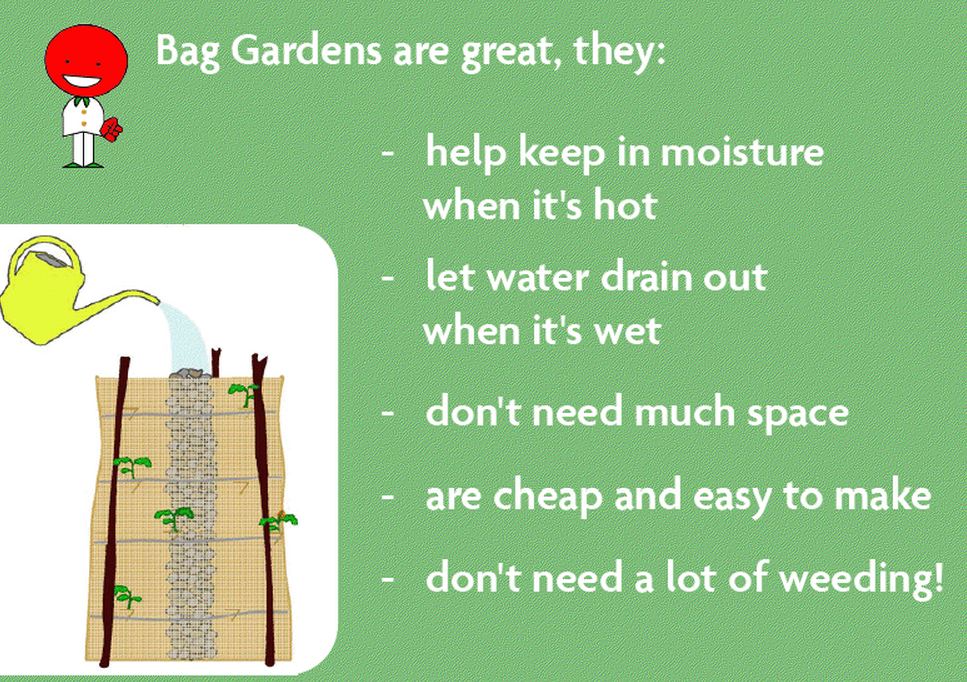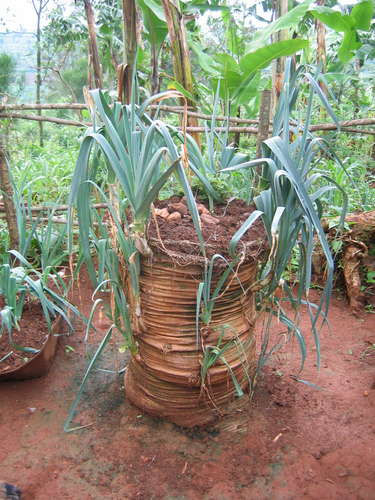When I first heard about “bag gardening” I immediately thought of something like this:

NOTE: This is an experiment in gardening by the designer Topher Delany at a Gunnebo Castle in southern Sweden. The bags he used are for construction debris. They are commonly used in Sweden instead of hard containers (they cost $15 a pop).
However, bag gardening is a lot more versatile and practical than these big yellow bags. Here are some of the advantages of this method:
- It’s very easy to establish a garden. You don’t have to till the soil and you don’t even need good soil to start with. All you need is a bag of rich soil.
- The bags prevent cut worms and other weeds currently in the soil from killing your crops. Also contaminated soil won’t harm your crops.
- The bags help to retain water, reducing water use.
Here are some examples.
Store Bought Bag Gardens
A practical application of bag gardening is to use bags of garden soil to rapidly set up a garden with a minimum amount of effort.
Here’s an example of that:

As you can see in this picture, these bag gardens are simply bags with slots cut into the top (this garden was built using a square foot method of planting). Mix in a little fertilizer and poke the bottom of each bag with a dozen drainage holes and you are off to the races.
At the end of the season, remove the bags. Next season, add more bags. Eventually, the soil will be good enough to garden directly.
African Bag Gardens
These bag gardens are more versatile than the store bought gardens seen above. Here’s a simple overview of the concept from an aide organization:

As you can see, African bag gardens are vertical instead of horizontal. They are also made out of burlap any other handy material instead of plastic.
One of the most interesting additions to this method is a vertical drain. This drain is built using small stones (as you fill the bag with composted soil, use a coffee can without a bottom as a guide for placing the stones at the center). Seeds are added to holes in the sides and at the top.
The result is something like this bag from Uganda:

A big advantage of a vertical bag garden is all of the surface area for growing food it provides. A 1 cubic meter bag provides up to 5 square meters of growing surface.
Keep inventing the future!


